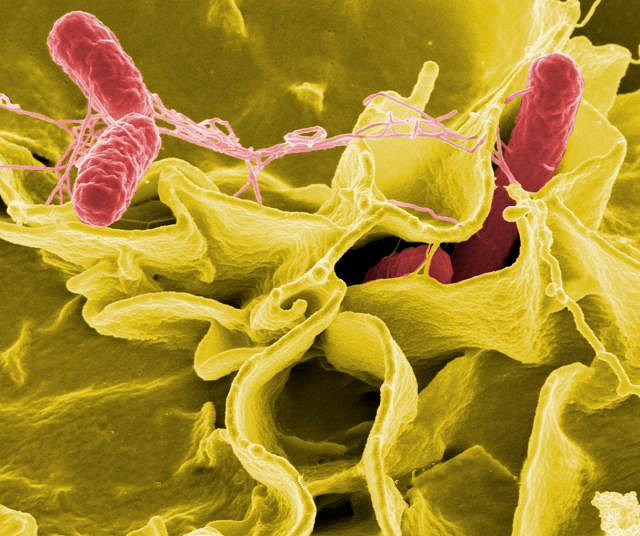Send to a friend
The details you provide on this page will not be used to send unsolicited email, and will not be sold to a 3rd party. See privacy policy.
[SÃO PAULO] An invasive and virulent strain of Salmonella Typhimurium which emerged in Sub-Saharan Africa has been identified elsewhere for the first time, scientists have reported.
The bacteria can cause a severe gut infection with symptoms including fever, nausea and vomiting. It can even cause death.
The strain, known as ST313, has been found in Brazil, reports an article in the July edition of the journal Infection, Genetics and Evolution.
Until now it had been recorded only in Sub-Saharan Africa, where it kills a quarter of people who fall ill, particularly vulnerable patients infected with HIV or malaria, and malnourished children.
“These results should alert [health] authorities in the country, because infections with this bacterium are not subject to mandatory reporting.”
Cristiano Gallina Moreira
Unlike other subtypes of S. Typhimurium, ST313 is able to cross from the gut into the bloodstream.
The research team sequenced the genomes of 88 strains of S. Typhimurium in the labs of the US Food and Drug Administration. They isolated the strains from stool, blood and brain abscess samples collected from infected people, and also from contaminated foods gathered from across Brazil between 1983 and 2013.
They found the ST313 strain in samples isolated between 1989 and 2003 in Sao Paulo, the country’s largest and richest city.
The team also verified that the ST313 strain invades and replicates in phagocytes (cells that protect the body from infection) more easily than do other Salmonella varieties.
Biomedical scientist Fernanda Almeida, from University of São Paulo’s Faculty of Pharmaceutical Sciences of Ribeirão Preto (FCFRP-USP) and lead author of the research, says that, unlike the African strain, the new strain does not show signs of antibiotic resistance. “But the Brazilian ST313 is much more aggressive and invasive, which is a problem,” she told SciDev.Net.
S. Typhimurium is one of the main causes of gastroenteritis globally. It can infect livestock such as pigs and lambs, and people can get infected by eating contaminated or improperly cooked meat.
For biologist Cristiano Gallina Moreira, from the Faculty of Pharmaceutical Sciences at São Paulo State University, the rise of a new strain of S. Typhimurium in Brazil is “very worrying”.
“These results should alert [health] authorities in the country, because infections with this bacterium are not subject to mandatory reporting [in Brazil],” he warns.
But she pointed out that although this Salmonella strain is much more dangerous than others, pharmaceutical companies are unlikely to develop a vaccine due to the low return on investment.
The research, published in the journal Infection, Genetics and Evolution, was supported by FAPESP, a SciDev.Net donor.














